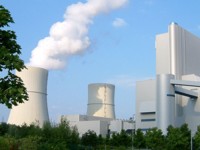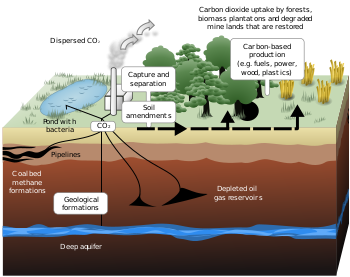Carbon Capture Will Require Massive Investment
 EurActiv.com - The world will need to set up 100 CO2 capture and underground storage projects by 2020 to ensure that the fight against climate change remains affordable, says the International Energy Agency (IEA).
EurActiv.com - The world will need to set up 100 CO2 capture and underground storage projects by 2020 to ensure that the fight against climate change remains affordable, says the International Energy Agency (IEA). The agency’s roadmap says that between $2.5 and $3 trillion of additional investment will be needed worldwide within the next four decades to launch the technology commercially. This would require building 100 demonstration projects by 2020 and over 3,000 by 2050, it said.
The agency notes that the challenge will be to integrate those individual stages of carbon capture and storage (CCS) that have already proved technically viable and to scale them up. At present, only five fully integrated, commercial-scale CCS projects are operational, in Norway, Algeria and North America.
The effort must be led by the developed world, with OECD governments increasing funding for demonstration projects from $3.5 to $4 billion annually over the next decade, according to the report. It nevertheless points out that there is a pressing need for rapid development in coal-intensive developing countries.
The IEA says developed countries must make available $1.5-2.5 billion to fund CCS demonstration in developing countries. It stresses that the short timeframe and the massive scale of investment required make wide international collaboration indispensable.

Schematic showing both terrestrial and geological sequestration of carbon dioxide emissions from a coal-fired plant.
Poltical backing strongThe report was presented at a ministerial meeting of the Carbon Sequestration Leadership Forum (CSLF) in London. The forum brought together energy and environment ministers to discuss ways to accelerate the commercialisation of CCS.
In a statement, the 15 ministers called on negotiators at the UN climate conference in Copenhagen this December to “recognise the importance of CCS in mitigating climate change and in achieving the Convention’s ultimate objective of stabilisation of greenhouse gas concentrations in the atmosphere at a level that would prevent dangerous anthropogenic interference with the climate system”.
They argued that the technology should be recognised in any mitigation strategies and technology incentives that might emerge from an agreement in Copenhagen.
The meeting saw political leaders from Europe and the US to China throw their weight behind the technology. CCS is increasingly viewed as a bridge to a low-carbon energy system, as coal - which accounts for a quarter of the world’s energy supply - is expected to remain one of the cheapest energy sources for decades to come.
“There’s agreement that we need countries around the world to finance demonstrations, as we are doing in the UK. We need technology cooperation for know-how and capacity building, and a financing agreement at Copenhagen which can drive CCS forwards in developing countries,” said UK Energy and Climate Change Secretary Ed Miliband.
It is hoped that financial assistance to CCS projects in emerging economies like China will kickstart the stalled climate negotiations. The EU and the US are keen to secure meaningful emissions reduction pledges from China, which argues that it will need sizeable funds to cut emissions without hampering its growth.
Big investments in CCS are already planned in OECD countries. Norway, which announced a most ambitious emission reduction target of 40% by 2020 during the latest round of climate talks in Bangkok, said last week that it would almost double its budget for CCS next year.
The US is earmarking over $4 billion for CO2 capture, a figure which is to be matched by $7 billion from the industry. In a letter sent to the energy ministers, US Energy Secretary Steven Chu pointed out that the Obama administration’s commitment represents the largest investment in the technology by any government.
“I believe we must make it our goal to advance carbon capture and storage technology to the point where widespread, affordable deployment can begin in 8-10 years,” he said.
The EU is planning up to 12 demonstrations on its territory by 2015. The first six projects to receive EU funding are currently being debated by member states.
“However, it is also time for significant private sector investments in order to commercialise demonstration projects and bring CCS technologies to the level of economic feasibility,” said Energy Commissioner Andris Piebalgs.
For More Information: EurActivYou can return to the main Market News page, or press the Back button on your browser.

